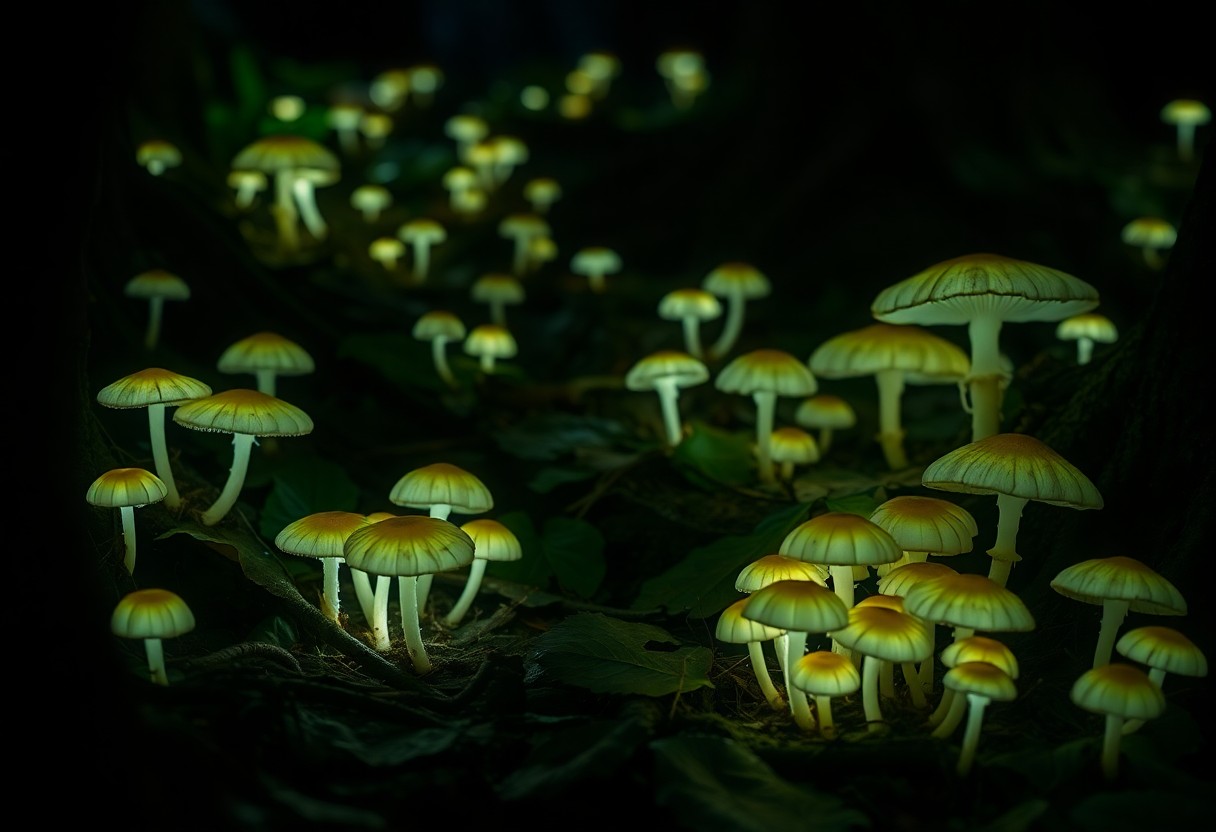Most people are captivated by the enchanting glow of bioluminescent organisms, and if you’ve ever stumbled upon a patch of glowing mushrooms during your evening stroll through the woods, you have likely been filled with wonder. The sight of these luminous fungi is not just visually striking; it’s also a remarkable phenomenon of nature that invites you to explore the intricacies of life and light.
Bioluminescence, the ability of living organisms to produce and emit light, is found in various species across the animal and plant kingdoms. However, mushrooms that emit light have a unique charm of their own, evoking a dreamlike quality among the shadows of the forest. If you’ve ever found yourself curious about how and why these intriguing fungi glow, you’re certainly not alone.
Fungi, particularly certain species like *Mycena chlorophos* and *Armillaria mellea*, are known for their bioluminescent properties. The phenomenon is primarily attributed to a chemical reaction involving a light-emitting compound called luciferin, which combines with oxygen in the presence of an enzyme known as luciferase. If you were to observe this reaction in action, you would discover how elegantly the natural world works: it’s a complex yet harmonious interplay of biology and chemistry that transforms energy into light.

Why do you suppose these mushrooms glow? The reasons are varied and intriguing. Some scientists posit that bioluminescence serves a crucial role in attracting insects, which can aid in the distribution of spores, ensuring the survival and propagation of the species. Imagine wandering through a dark forest and inadvertently attracting delicate moths that, drawn by the glow, flit from one mushroom to another, unknowingly helping the fungi reproduce. Others suggest that the light may deter herbivores from munching on these luminous delights, acting as a signal that warns potential predators that they are unsuitable for consumption.
Moreover, bioluminescent fungi are not merely a feast for the eyes. Their glow has significant ecological implications, offering insight into the health of forest ecosystems. If you were to encounter a flourishing patch of these glowing mushrooms, it may indicate a rich and diverse habitat, where decay and regeneration are part of an intricate web of life. Observing their presence could lead you to a deeper appreciation of the interconnectedness of all living organisms in the environment.
As you ponder the mysteries of glow-in-the-dark mushrooms, remember that there is still much to learn about these enchanting organisms. Research into bioluminescence is ongoing, and new discoveries are continually being made. You may find yourself inspired to probe deeper into the world of fungi and their luminous capabilities, igniting your curiosity and awe for the wonders of nature.
So, the next time you wander through a naturally illuminated patch of trail, take a moment to pause and appreciate the allure of bioluminescent mushrooms. They are not merely a visual spectacle but a testament to the extraordinary and often mysterious capabilities of nature that beckon you to explore further.

